6 Super Simple Fun And Effective Math Games Kids Will Enjoy

Math: the bane of parents and children alike. Why is maths, one of the most hated subjects to learn? You ask a child and they may say math is too difficult, boring, or overwhelming to learn. Ask a parent and they will say the same thing about having to teach the subject. Math is abstract, so it needs to be taught in tactile ways in order to make the symbols of math concrete. Worksheets and math apps are great reinforcements, but they aren't tactile. Children learn best if they can be physically involved. Hands-on math activities grow a love for math through fun, engaging, and tangible exercises that not only teach and develop a strong relationship with math, but also serves as a bonding opportunity between parent and child.
Here is the list of simple, fun, and effective math activities that are kid tested and mother approved to help you learn mathematical skills really fast:
1. Play Smash It Away for Teaching Subtraction
This is a great beginning math game for kindergarten and first grade levels. Using a ten frame with this activity helps your child organize and visualize the symbolic value of the numbers. You don't necessarily need to print the ten frame out. You can make one out of tape or draw one on paper. This is a fun tactile way for kids to familiarize themselves with number values and number sentences.
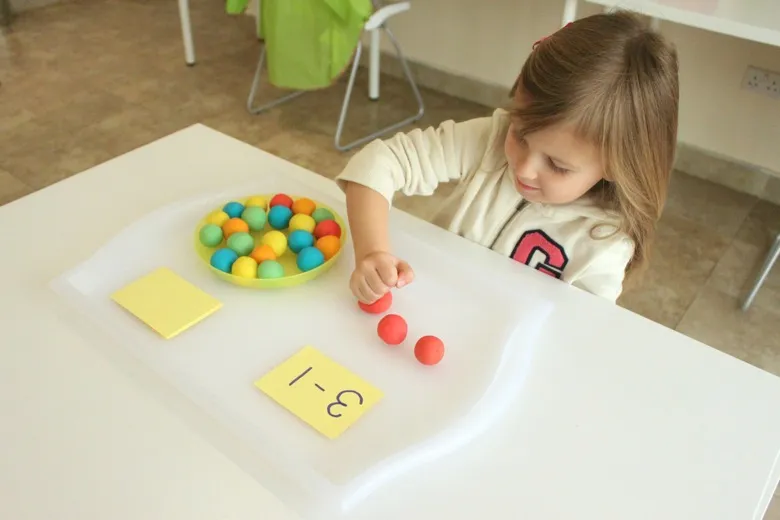
The whole idea of this activity is to show your child the concept of subtraction: when you subtract, you are taking (or smashing) a value away. You simply write out a math problem and use the dough to represent the numbers. In the picture above, the girl has 3 balls lined up and is smashing 1 to represent "3 take away 1."
My boys are little demolitionists. They could, as my father-in-law says, "tear up an anvil", so they were happy to smash the balls with their hands, feet, and even a hammer! ( a toy one). This activity allows room for you to get as creative as you would like by using other items to represent what subtraction means. Marshmallows, small balloons, or even candy (if you dare to be so bold) can be used to substitute play dough.
2. Use Go Fish for Number Recognition and Counting
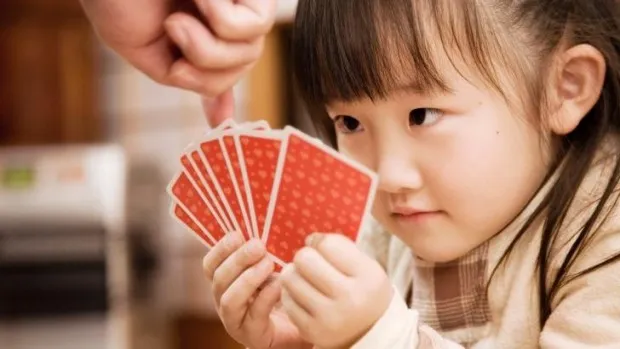
There's a reason Go Fish is a classic for kids. It's easy, fun, and sparks a love for card games. This is a two or more player game that uses a deck of cards (or more depending on how many players). Here's how to play:
- Remove the jokers from the deck.
- For 2-3 players deal out 7 cards each.
- Once dealt, spread the remaining cards face down in the middle of the table to serve as the "fishing pond".
- Look at your 7 cards and set aside any pairs you have (e.g., two 7s, or two Jacks, or two 3s, etc.)
- The first person to go looks at their cards and asks the person next to them if they have a card that needs matching. For example, if you have a 3 in your hand, ask the person if they have a 3 in order to make a match for yourself.
- If the person has the matching card you asked about, they hand it to you and you set your pair aside. You get to go again until you cannot get any more matches. If there are more than 2 players, the player can ask another person about a card, or the same person about a different card.
- If the person does not have the matching card, they say "go fish" and you pick a card from the "fishing pond". It is the next person's turn.
- Continue this process until someone runs out of cards first.
- The game is won by the person with the most pairs.
3. Use the Card Game War to Teach Multiple Math Equations
This is a really versatile game that is a go to for our family. It's a two player game that can be utilized from kindergarten through 3rd grade adjusting it to the skill level of the student. Miss Brain's video explains the different methods almost exactly as mine. Check out this video for visual instructions:
Learn the mathematical concepts of Number Recognition and Comparison
For this card game you will need to:
- Set aside all the face cards (A,J,Q,K). You won’t be using them.
- Divide the remaining cards evenly between you and your child (18 each). A traditional deck of playing cards has neither the 1 or 0. If you want a deck of cards that include all the numbers, there are some good ones at Dollar Tree; they have a really cute deck of Dr.Seuss cards that go up to 20.
- Once the deck is divided evenly amongst the two of you, face the deck in front of you face down.
- When ready, flip over the top card to reveal the value of the card.
- Have your child say the name of the number and count the symbols the number represents (clubs, diamonds, spades, hearts, or other objects depending on the deck you decided on).
- You do the same for your card and then ask which card has the biggest number.
- Whoever has the biggest number, collects the card of the opponent.
- In the instance where you both flip over a card with the same value, that's when you declare, "war!" You then flip over another card and whoever has the highest amount takes all four cards and sets them aside. Continue this throughout the remaining cards until there are none left.
- The players count the number of cards collected and whoever has the most cards wins the game.
Once you feel that your child is familiar with number values, you can introduce them to the vocabulary of least and greatest. For example, if you have a 7 and your child has a 10, you can ask, "Which number is the greatest?" 10 "Which number is the least?" 7
Learn the mathematical concept of Addition
You play this version the same way you would in the comparing numbers game except, rather than drawing one card from the deck, you draw two. If you want to extend the time of the game, add another deck of cards.
Add up the values of the card, declare your total and have your child decide which sum is greatest. For example, say you flipped over two cards and they were a 3 and a 4, model to your child how to combine these values by pointing to each symbol and counting the number 3 card (“1,2,3”), then continue counting the symbols on the number 4 card (“4,5,6,7”) and saying, “3 plus 4 more is 7”. This is a great opportunity to cover the meaning of, “more than”, “less than”, “total”, and “sum”. For example, once you both have added up your totals, you can say, "My sum of 3 and 4 is 7. Your total is 9. 9 is more than 7."
Learn the mathematical concept of Subtraction and Multiplication
Pretty simple. It’s the same concept as addition except you use either subtraction or multiplication. When you feel your child is ready, you can assign the face cards to whatever value you are wanting to work on and make it as difficult or easy as you would like. I let my guy assign the values for the face cards and he once gave the value of the ace, 100. He had no idea what he was doing, but it was an impromptu lesson in showing him that you just tag on the 2 zeros of 100 to the number you are multiplying (2x100=200, 9x100=900,etc.). That's the beauty of these games: there are ample opportunities to teach so many facets of math in fun ways.
If you really want to go above and beyond and cover more math vocabulary, you can transform this game into a word problem game. It’s a great way to introduce word problems and have them understand the addition and subtraction cues (in all, altogether, how many, how many more). For example, you can jump into imagination land and transform that 3 into,“3 dragons were flying in the air and 4 more came to join them. Now there are 7 dragons flying in the air altogether”...or whatever you and your child can come up with. Now that my boys are older, they play this game together and use the total of their numbers as powers for their Pokemon. I don’t know. It’s a game they made up themselves and enjoy playing. I don’t really care what they make up as long as they are having fun and learning.
This card game is so versatile, simple, and effective. You can really make it your own and adjust it to the learning level of your child. I highly recommend it.
4. Play Monopoly to Teach Money and Business Basics
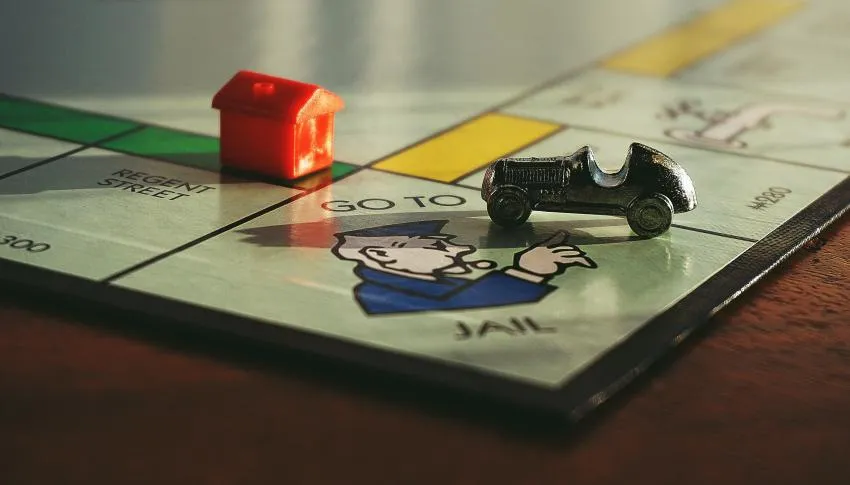
Monopoly is another great game that covers so many facets of math. Added bonus, it also includes reading! Because this game can go on for hours and most children (and some adults) don't have the attention span for it, opt for the short play version that the game instructions include.
Our family hands out more properties than the instructions suggest to keep the game interesting. Have your child add up their own totals on the dice and read (if they are able) the Chance and Community Chest cards for each player. I let my 8 year old be the banker to have him practice adding and subtracting big numbers. It's also a good opportunity to educate your child on the basics of making wise investments and business ventures.
5. Use a Flashcard Trail to Reinforce Math Facts
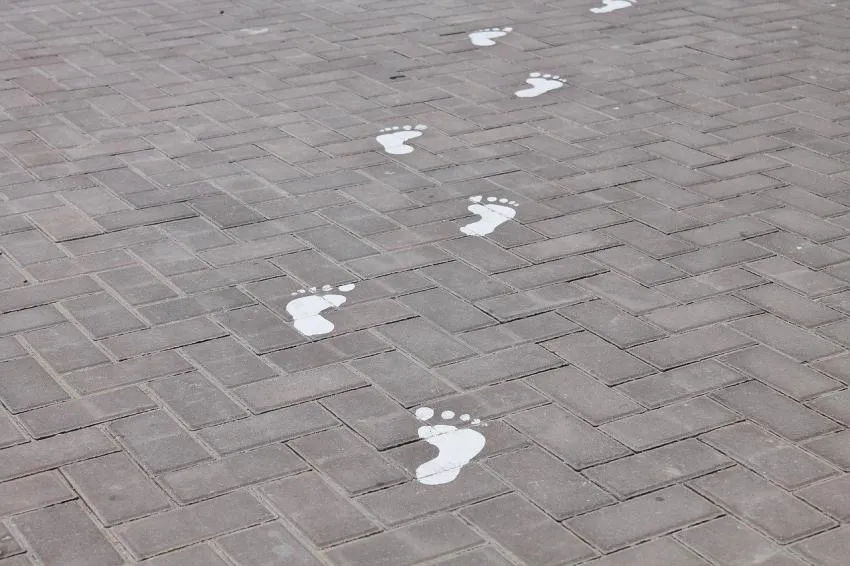
This is a fun way to reinforce math facts. The traditional method of sitting a child down to recite facts with flash cards, is well, boring. My kids absolutely hated it and they would cry and groan over this exercise. Memorizing math facts pays dividends for the upper grade levels, so it is in the child's best interest to ensure that they know as many math facts as possible. But how do you make this fun? Lay the flash cards on the ground! For some reason, putting the flash cards on the floor in a zig-zag pattern makes reciting math facts way more fun. Who knew?!
No. Really. It's true. Lay the flash cards (this can work for sight words too!) your child is practicing in a zig-zag pattern on the floor, and have them call out the full number sentence to you as they follow the trail. Calling out the number sentence will help them remember the facts because movement coupled with verbalization helps solidify memorization. Added bonus: you can secretly time them to see how they are improving on their math facts without them feeling under pressure.
Once I started this activity, my boys were all about it; I even sweetened the deal by adding a little candy at the end of the trail (sort of their pot of gold at the end of the rainbow type of deal). Now this is one of their favorite activities for math lessons (could it be the candy?). I don’t have to put too much effort, I can evaluate their progress, and they are having fun while learning. Win win!
6. Learn to Skip by 5s Using the Domino Game
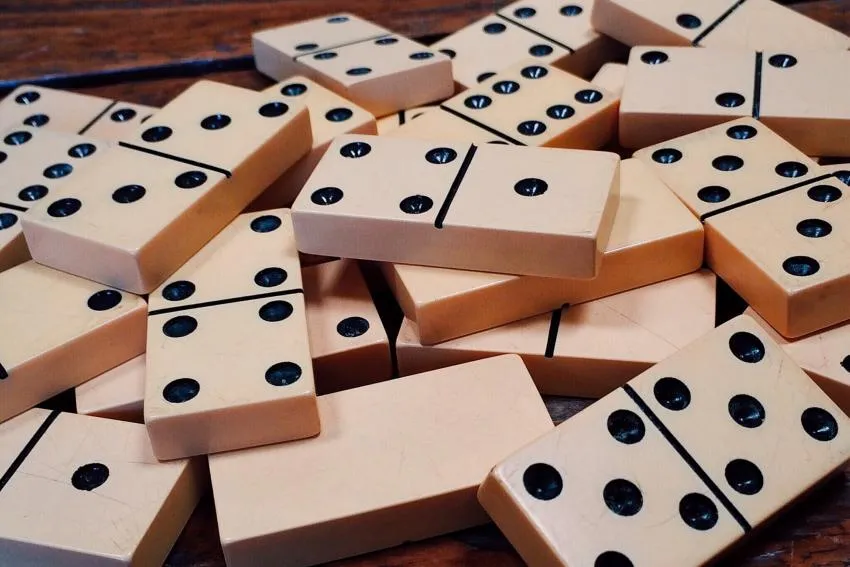
Dominoes is a great 2-4 player game you can utilize to teach your child how to skip by 5s. Just like all the other games, there are multiple opportunities to practice different math principles within the game:
- If you are keeping score, you can teach your child how to use tally marks.
- Children can familiarize themselves with the dot patterns and the number it represents.
- Dominoes can even be used to introduce fractions.
- Best of all, you can line them up on end and witness the domino effect!
Well. That's all I've got. Hope at least one of these, if not all of them, serve useful in your math lessons. Happy teaching!
Opinions and Perspectives
Using candy as counters made these instantly more appealing to my picky learner
Sometimes simple is best. The flashcard trail is so basic but incredibly effective
My son struggles with dyslexia and these hands-on activities work so much better than written work
I printed the ten frame on cardstock and laminated it. Has lasted months of enthusiastic smashing
Our whole family gets involved with these games. Even grandparents join in when visiting
Started using Monopoly Junior first then moved to regular Monopoly. Perfect progression
My kids invented their own math game inspired by these using their toy cars and number cards
The war game saved our morning routine. Quick math practice while eating breakfast
I love how these require minimal supplies. Most use things we already have at home
Anyone else notice their kids teaching these games to their friends? Math playdate success
The Go Fish game helped my twins learn to take turns while practicing their numbers
We use marshmallows instead of playdough for Smash It Away. The kids get to eat their math problems
I work with special needs kids and these tactile games are perfect for different learning styles
Just tried War with multiplication today. Big hit with my third grader who needed times table practice
The visual aspect of Smash It Away really helped my visual learner understand subtraction
These games have helped my son overcome his math anxiety. He actually asks to play them now
Smart idea about using Dr Seuss cards from Dollar Tree. The regular deck missing 1 and 0 was confusing for my little one
My daughter turned the flashcard trail into an obstacle course. Now she does math while hopping between cards
I appreciate how these games can be adapted for different skill levels. We use War for both my kindergartner and third grader
The domino effect part is definitely their favorite. Sometimes we spend more time setting up chains than doing math
Ive found mixing up different games keeps it fresh. We rotate through all six throughout the week
The competition can actually be good motivation. My sons math skills improved dramatically once he wanted to beat his sister at War
Anyone else notice their kids getting competitive with these games? Sometimes mine get too focused on winning rather than learning
We modified the Monopoly game to use only addition and subtraction appropriate for my first grader. Works great
What I love most is how these games create bonding time while learning. Math time isnt a struggle anymore in our house
The War card game has been our go-to for long car rides. Its amazing how much math practice they get without complaints
I strongly disagree about worksheets. My students retain so much more when theyre actively engaged in games like these
These games are fine but nothing beats traditional worksheets for really learning the concepts
Try making her say each fact out loud while walking the trail. It worked wonders for my speed demon
I tried the flashcard trail but my daughter just rushed through without actually learning the facts. Any tips to slow her down?
My kids turned the Smash It Away game into a monster math game where they pretend the playdough numbers are creatures they have to defeat
The dominoes game sounds interesting but I worry about the pieces getting lost. Anyone tried making their own with cardboard?
I was skeptical about using Monopoly for math but its been amazing for teaching my kids about money management
The flashcard trail is such a simple yet effective idea. My son literally runs through his math facts now instead of sitting bored at the table
These are great but I wish there were more games for older kids. My 4th grader needs help with fractions
Actually I found War to be perfect for my 5-year-old. The key is starting with just number recognition before moving to addition or subtraction
Does anyone else find the War card game a bit confusing for younger kids? My 5-year-old struggles to keep track of the rules
The Go Fish variation is brilliant! We tried it last weekend and my 6-year-old was counting without even realizing he was learning
I love how these games make math less intimidating for kids. My daughter used to hate math but the Smash It Away game completely changed her perspective